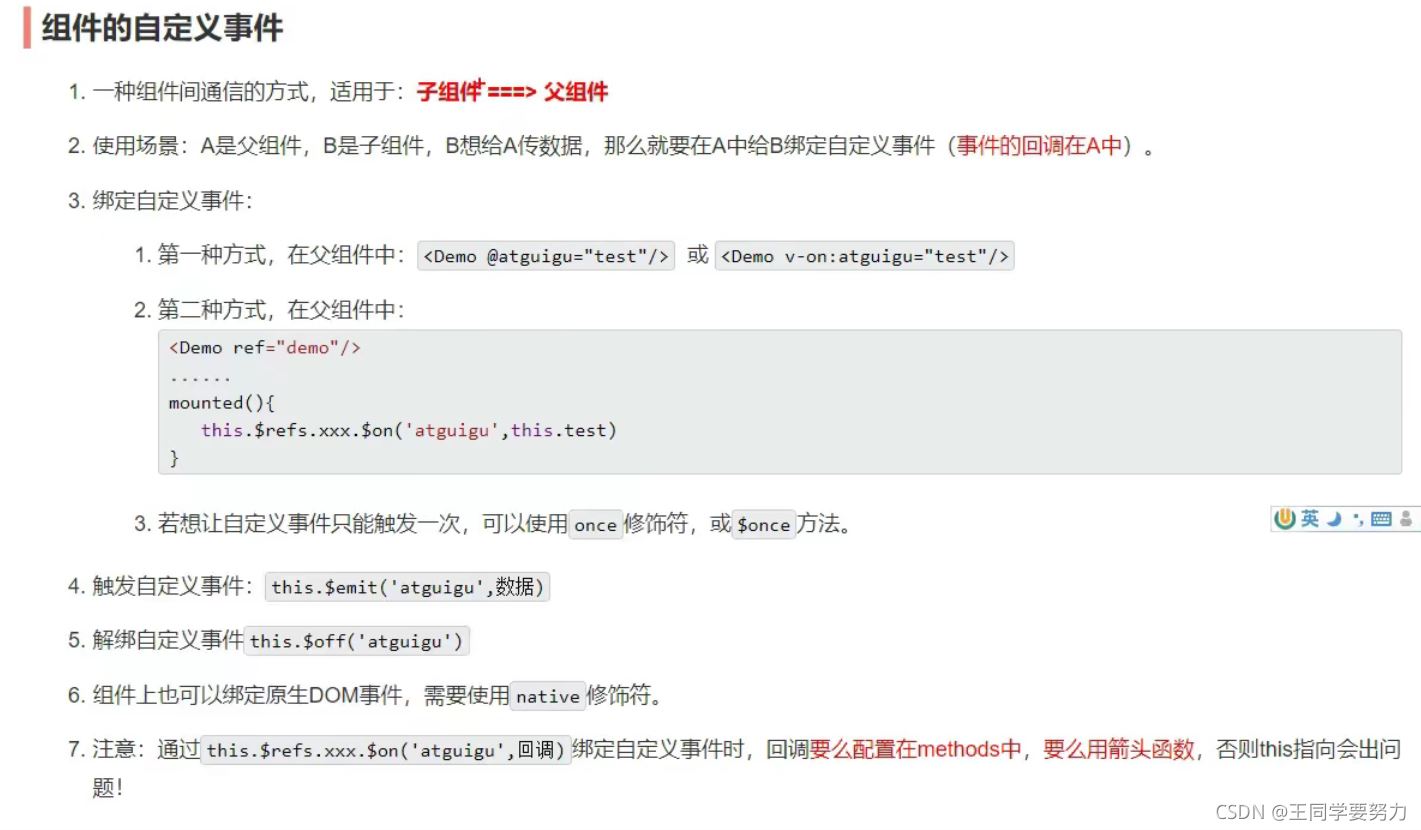本篇文章为大家展示了如何理解Vue中组件的自定义事件,内容简明扼要并且容易理解,绝对能使你眼前一亮,通过这篇文章的详细介绍希望你能有所收获。

<template>
<div >
<h3>{{msg}}</h3>
<!-- 通过父组件给子组件传递函数类型的数据props实现:子给父传递数据 -->
<School :getName="getName"/>
<Student :getStudentname="getStudentname"/>
<!-- 通过父组件给子组件绑定一个自定义事件:实现子给父传递数据 -->
<Age v-on:elderSex="demo"/>
<!-- 通过父组件给子组件绑定一个自定义事件实现:子给父传递数据(第二种写法:使用ref) -->
<!-- <Student ref="student"/> -->
</div>
</template>
<script>
import School from './components/School.vue'
import Student from './components/Student.vue'
import Age from './components/Age.vue'
export default {
name:'App',
components:{ School,Student ,Age},
data(){
return {
msg:'你好,世界!'
}
},
methods:{
getName(name){
console.log('App收到了名字',name);
},
getStudentname(name1){
console.log('接收到了学生的姓名',name1);
},
demo(sex1){
console.log( 'demo被调用了',sex1);
}
},
// mounted() {
//绑定自定义事件
// this.$refs.student.$on('elderSex',this.schoolAge)
//绑定自定义事件(一次性)
// this.$refs.student.$once('elderSex',this.schoolAge)
// },
}
</script>
<style scoped>
</style><template>
<div class="demo">
<h3>学生姓名:{{name}}</h3>
<h3>学生年龄:{{age}}</h3>
<button @click="sendStudentname">把学生的名字给APP</button>
</div>
</template>
<script>
export default {
name: 'Student',
props: ['getStudentname'],
data() {
return {
name: '张三',
age: 19
}
},
methods: {
sendStudentname() {
this.getStudentname(this.name)
}
}
}
</script>
<style>
.demo {
background-color: skyblue;
}
</style>上述内容就是如何理解Vue中组件的自定义事件,你们学到知识或技能了吗?如果还想学到更多技能或者丰富自己的知识储备,欢迎关注亿速云行业资讯频道。
免责声明:本站发布的内容(图片、视频和文字)以原创、转载和分享为主,文章观点不代表本网站立场,如果涉及侵权请联系站长邮箱:is@yisu.com进行举报,并提供相关证据,一经查实,将立刻删除涉嫌侵权内容。